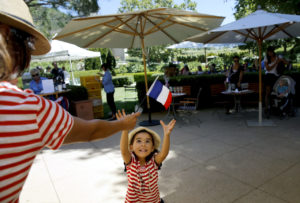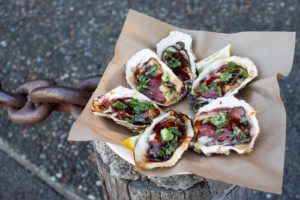For most people, ordering wine in a restaurant is a tricky game, rife with pitfalls that are not always accidental.
Chicanery is not as common as some cynics believe, but a lot of what is listed on restaurant wine lists can be the result of a “creative” wine director who expects that most patrons will not know much about wine.
The easiest to spot is the high-image brand masquerading as an expensive wine but with none of the quality one might otherwise expect. Just because a wine carries a recognizable name is no proof that the wine relates to that same winery’s highest end product. It may well be a lower-priced “second label.”
Sparkling wines that sell for $35 to $50 in restaurants may also use fanciful names to imply high quality can easily fool those without sufficient wine education. (“Charmat method” may sound like a special technique, but it is usually used for lower priced bubblies.)
Wine marketing people have many ways to justify a price higher than a wine should command. Phrases like “old vines,” “special reserve,” “Barrel Select” and Special Lot have no legal meaning and are there to encourage novices to pay more than they should.
Other menu lines that drive me bats: Lists that equate primitivo to zinfandel (they aren’t the same). Or note that a wine is “dry” when it is not.
A few weeks ago I heard a wine educator suggest that the best of value in a restaurant is not the cheapest bottle, but the second cheapest. Such generalizations are far too simplistic to be accurate.
Often the best value on wine lists is a bottle from the south of France, which produces vast amounts of good value wine that is rarely labeled to fool diners.
Cote du Rhone reds once were a reliable lower-priced choice because they usually needed no bottle aging. Also worth investigating are wines from Chile, New Zealand, Italy’s lesser-known regions, South Africa and Australia.
With millennial buyers so adventuresome, many restaurant wine directors are now bringing in experimental items that may not be listed on the main wine list but can be superb options.
In the past year, dry rieslings, Gruner Veltliners, gamays, barberas and grenache blancs have shown up unexpectedly in modest cafés, with wine directors eager to have patrons try a glass.
Today’s emerging younger wine buyer seems to be open to new and different tastes, unlike the baby boomers, who demand chardonnay, cabernet and zinfandel.
Blended wines can be a bit of a risk, but when you find an excellent version, it can be a real winner.
Wine of the Week:
2013 Trinity Hill “The Trinity” red wine blend, Hawkes Bay ($17): Blended wines can be a bit of a risk, but when you find an excellent version, it can be a real winner. This producer of top notch pinot noir, sauvignon blanc and Bordeaux blends has always been a quality leader in New Zealand’s North Island district. This handsome blended wine is based on 55 percent merlot. The aroma is classic herbs and berries, with great acidity and low tannins. Just released, not yet widely available.
Sonoma County resident Dan Berger publishes “Vintage Experiences,” a weekly wine newsletter. Write to him at winenut@gmail.com.











